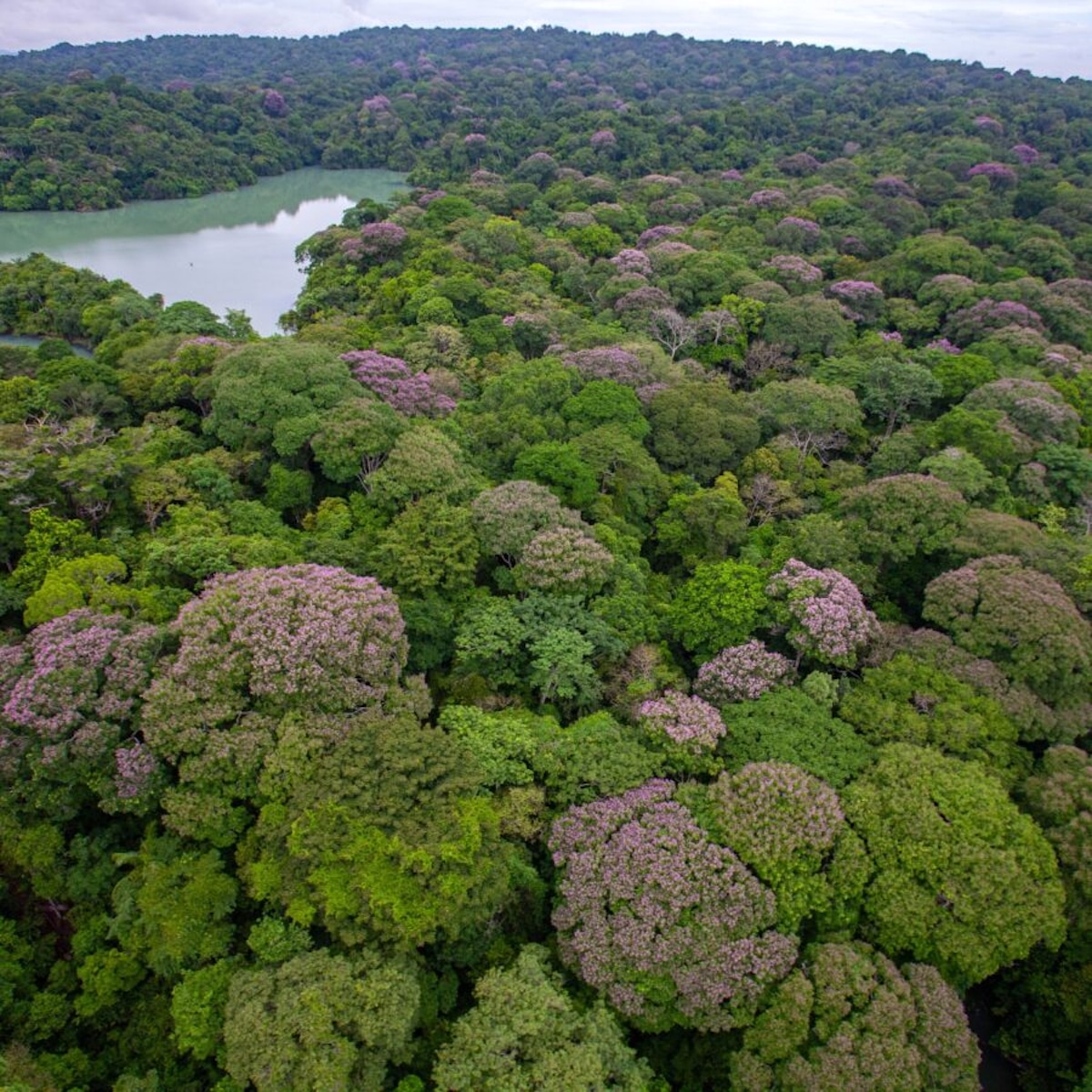Tropical Trees Distance Themselves From Their Own Species to Protect Forest Diversity

 Why you can trust us
Why you can trust us
Founded in 2005 as an Ohio-based environmental newspaper, EcoWatch is a digital platform dedicated to publishing quality, science-based content on environmental issues, causes, and solutions.
Tropical forests are the most biologically diverse land-based ecosystems on the planet, sometimes nurturing hundreds of tree species within one square mile. The concentration of diversity is astounding, even to scientists.
In a new study conducted in a Panamanian forest, researchers from The University of Texas at Austin (UT Austin) discovered that adult trees were three times farther away from other adults of the same species than from those of different species, effectively distancing themselves in order to flourish.
“A tree is more likely to survive when surrounded by different tree species with different resource needs, diseases, and herbivores,” the authors of the study wrote.
The researchers examined data from a century-old research plot on the Panama Canal’s Barro Colorado Island and found that the trees’ distance from each other was much farther than seeds usually travel during dispersal, a press release from UT Austin said.
“This is a steppingstone to understanding the dynamics of things like carbon storage that matter in relation to climate change,” said Annette Ostling, one of the authors of the study and an associate professor with UT Austin’s Oden Institute for Computational Engineering and Sciences and the Department of Integrative Biology, in the press release. “It’s such a fundamental question that, even if the applications are not yet known, there’s still a lot to learn, and this is one ingredient in understanding.”
The study, “Pervasive within-species spatial repulsion among adult tropical trees,” was published in the journal Science.
The research team discovered that individual species are more negatively impacted by the same species and the fungi, pathogens and insects that plague them. Thus, they create space in order to prevent the domination of any particular species, which leads to greater forest diversity.
“Due to an abundance of available data on this particular forest, we knew the exact location of every tree and also how far seeds travel,” said postdoctoral researcher and lead author of the study Michael Kalyuzhny in the press release. “We were able to ask: How should the forest look if trees just established where the seeds fell? With our computational models, it turned out that the real forest does not look like this at all – the real trees are much more far apart.”
The team said the study helps reconcile contrasting theories regarding the development of forests, as well as provides essential information on how tropical forests and their residents evolve and diversify in a period of mass extinction.
“Trees are the engineers that provide resources for the entire ecosystem, and since most of the species in the world reside in the tropics, we must better understand what maintains the biodiversity of planet Earth,” Kalyuzhny said in the press release. “Many medications are sourced from the tropics, including thousands of substances with anti-cancer activity. The research digs into this fundamental question about the natural world.”
Subscribe to get exclusive updates in our daily newsletter!
By signing up, you agree to the Terms of Use and Privacy Policy & to receive electronic communications from EcoWatch Media Group, which may include marketing promotions, advertisements and sponsored content.

 233k
233k  41k
41k  Subscribe
Subscribe 




